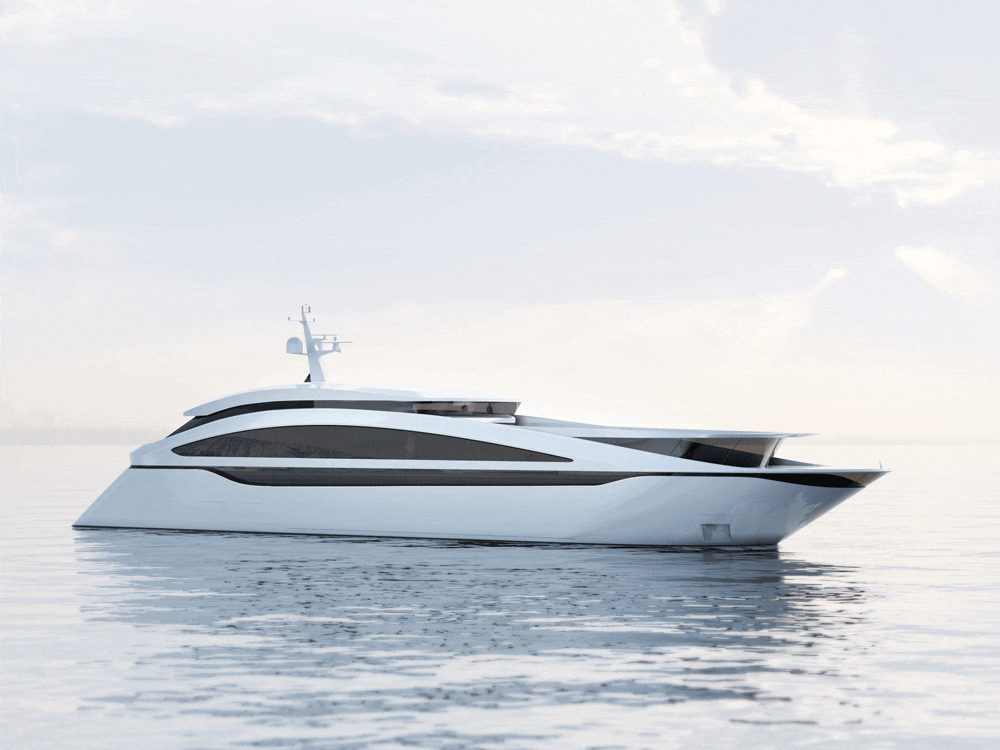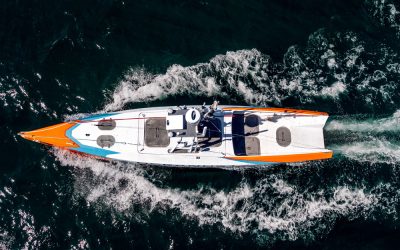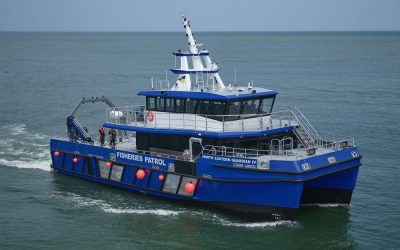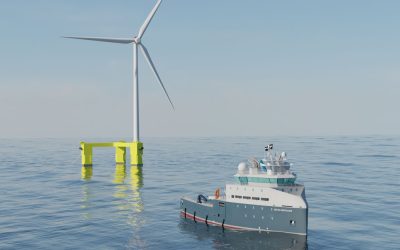Of all the yacht subsectors, the expedition yacht segment perhaps faces the most immediate pressure to guarantee low-to-zero-emissions operations, given the eco-sensitive areas these vessels are designed to visit.
Finland-based shipbuilder and designer Deltamarin elaborates: “Customer pressure is especially strong in the more exclusive ship types – expedition ships and yachts. A lot of clients in this market are ready to pay extra for a reduced environmental footprint of their trips, especially considering the often pristine areas they travel to – imagine the polar fjords of Svalbard, or the coral reefs of the southern oceans.”
Consequently, Deltamarin has developed a concept polar yacht, intended to function as an all-in-one cruiser/scientific research vessel, “connecting leisurely activities with responsible education and research”. The project began when Deltamarin initiated a market review to assess some of the expedition yachts currently out there (both built and on order), to gain a better overview of this niche but growing sector. As a result, the company says it has assembled what it believes to be the winning formula for its yacht’s design, including a potent hybrid powertrain incorporating MGO, fuel cells and batteries.
Developing such vessels is often seen as an arduous, complex task – and it can be at times. However, Gzregorz Mazerski, lead naval architect at Deltamarin, explains: “In a way, we have defined a dream ship – the one we would be excited to board and cruise ourselves to some exotic locations. This is not always the case in our everyday jobs, but such a personal connection helped us to engage much more in the design, and made the development process a bit more fun.”
For this project, Deltamarin worked in collaboration with industrial designer Northern Works. The proposed polar yacht comprises a winterised/ice-classed, displacement steel monohull (possibly featuring an aluminium superstructure, the group notes) which would measure 67.7m x 13m and accommodate up to 12 passengers/scientists, while supporting onboard lab space and helicopter operations. Importantly, key features include a substantial range – exceeding 6,000nm, equating to about 40 days’ autonomy – plus the ability to operate in zero-emissions mode for extended periods.
The partners’ initial choice of fuel for the yacht was methanol but they immediately ran into challenges, Mazerski tells Ship & Boat International. “If methanol had been more readily available in large quantities in small, remote ports, and if currently available methanol-fuelled engines hadn’t been too large for our application, methanol would surely have been more convenient to use, as it has higher volumetric energy density,” he says. Instead, Deltamarin and Northern Works opted for a hybrid system that starts with a pair of 1,300kW diesel-driven generators, to be used for longer transits. These MGO-burning units would be linked to an SCR system, to cut back on emissions. Then come two battery sets, totalling 5,250kWh of electric power, which would enable zero-emission operations for up to six hours at 7knots. If required, the operator could also use the the diesel generators to recharge the batteries.
The hybrid system is completed by four sets of hydrogen fuel cells, rated a combined 1,130kW. The fuel cells would be coupled with 222 hydrogen bottles, which would enable zero-carbon cruising for up to 13 hours. “All these would be combined for a hybrid diesel-hydrogen-electric system coordinated by a power management system that will ensure the best utilisation of energy in all operating scenarios,” Deltamarin says.
Mazerski reveals that the partners used datasheets for MAHYTEC’s H2 storage bottles, Proton Motor Fuel Cell’s PM400 units and Corvus Energy’s Orca lithium-ion batteries when assembling the conceptual powertrain. With regard to weight, he says that the batteries would amount to approximately 70tonnes, the H2 bottles to around 35tonnes and the fuel cells to just under 10tonnes. “It would be roughly 100-120tonnes of extra equipment; 6-9% of total lightweight,” he says.
The polar yacht would offer an estimated 200m2 of open deck space amidships, including a 10m x 3m swimming pool. Meanwhile, a pair of 50m2 balconies would be located aft. Space has also been reserved for lab facilities, a library and a lecture/meeting room. Mazerski says that the vessel would also house “typical” yacht garage facilities, which could be used to launch RIBs, jet skis, scientific probes and/or vehicles for excursions on shore.
Although Deltamarin and Northern Works are yet to address the onboard launch/recovery system(s) in comprehensive detail, Mazerski remarks: “We are currently assuming that the aft garage, starboard, will accommodate four large jet skis, while the forward garage will house one large [approximately 10m] and one small RIB port-side, and a submarine and up to six snowmobiles in its starboard section.”
The yacht concept also deploys “a bit of biomimicry”, Mazerski adds: namely, a polar bear-styled silhouette. “The idea was to create some unique silhouette that will be associated with clean polar regions,” says Mazerski. “This led us to a quite special layout. We wanted to create a unique external geometry, with the wheelhouse island in the extreme forward part of the vessel [the bear’s head] and the accommodation space in the mid and aft areas [its hips], separated by the open deck [its back].”






